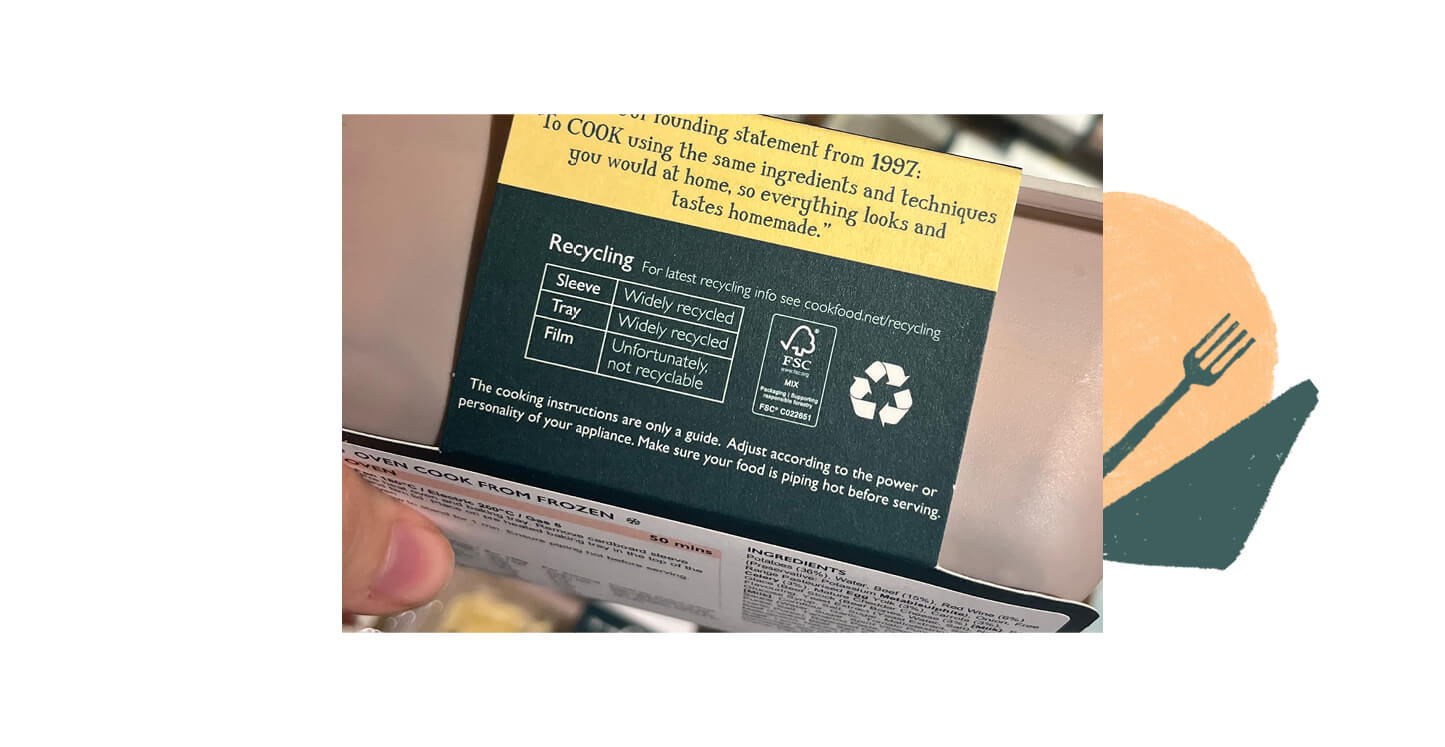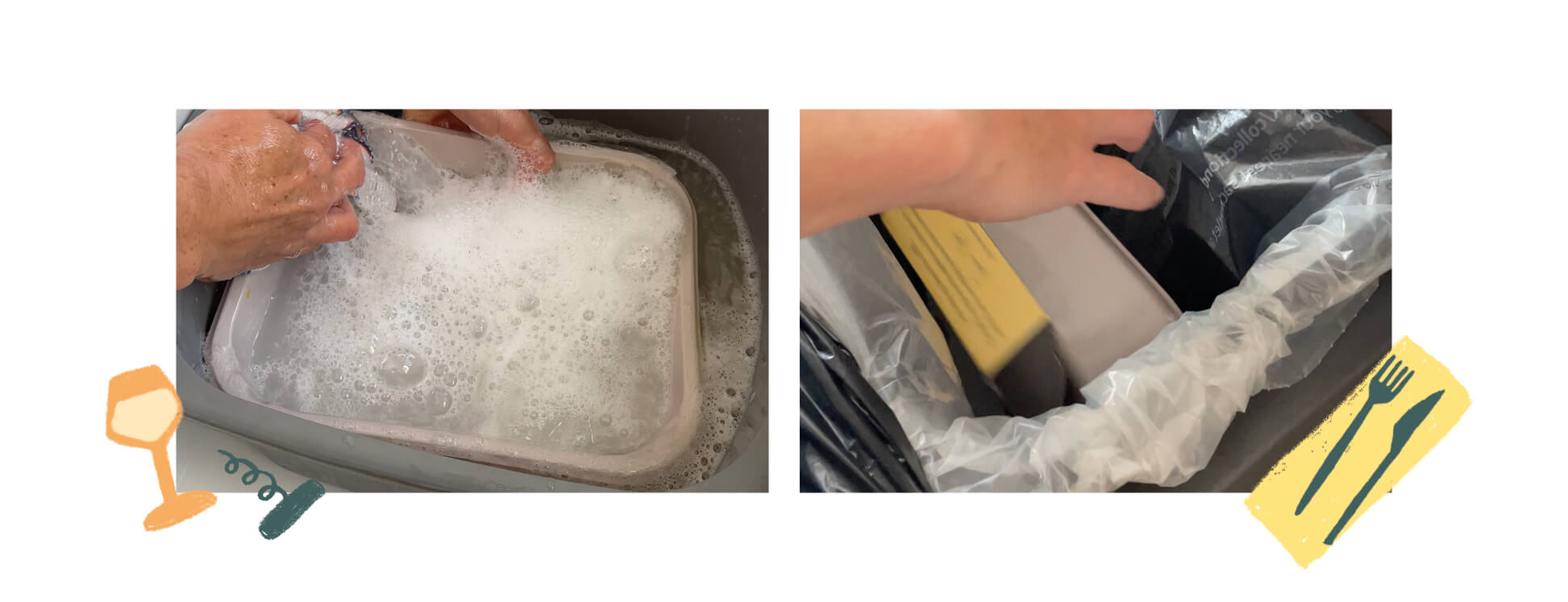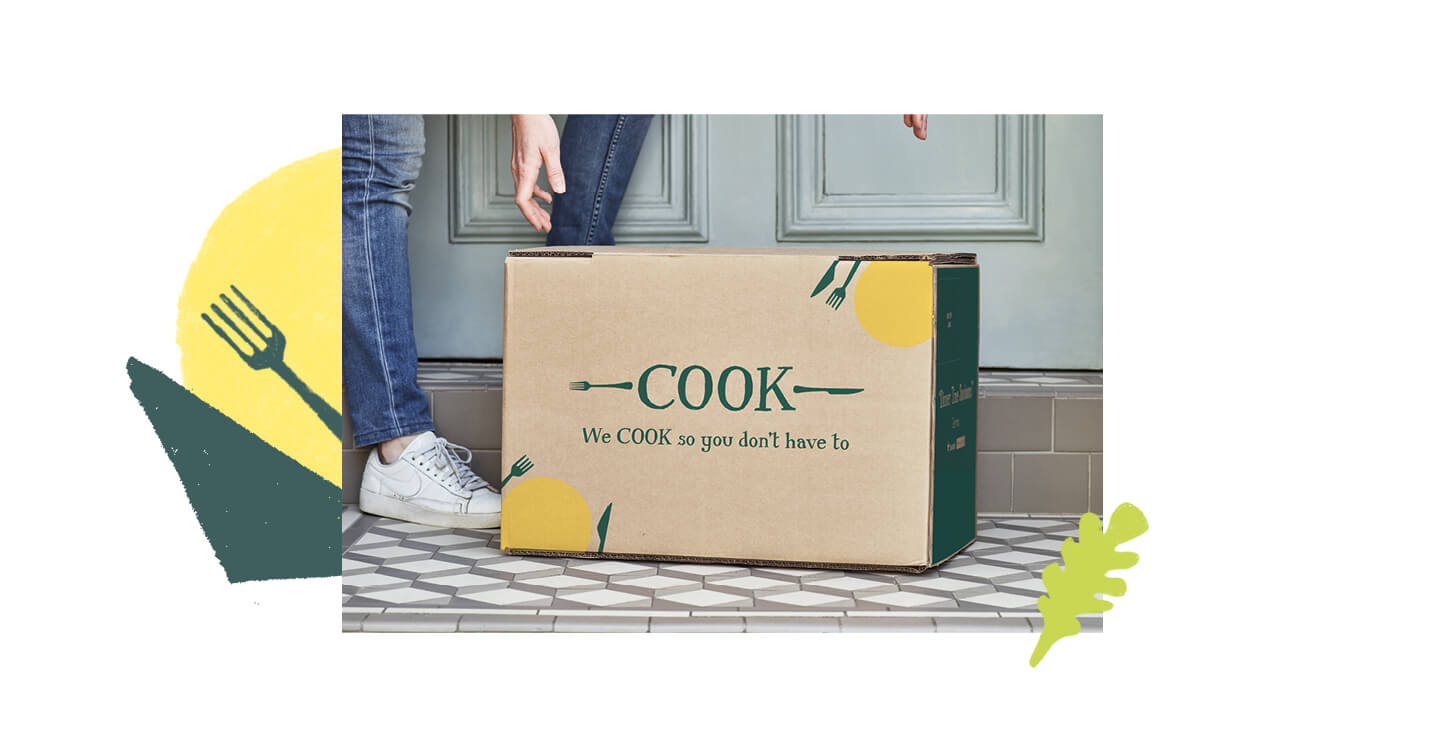< About Us - Our Planet
Recycling
Our ultimate aim at COOK is to leave everything that we have loaned from the planet in as good or a better condition than it was when we got it. No easy feat and something we can’t do without your help. So we’re on a mission to make recycling as easy as possible. Sadly, it’s not nearly as simple as it should be. Who recycles what varies from council to council across Britain.
The website Recycle Now is a brilliant resource for details specific to your area, as well as tips and guidelines.
Tips on what you can do to help us recycle:
Cardboard
The cardboard sleeves on our meals are 100% recyclable and can go into your kerbside recycling.

Food Waste
Many local authorities will provide homes with a food waste recycling bin, so if you don’t manage to finish your meal, you needn’t create any waste.
Plastic Film
The film that seals our meals is not currently recyclable kerbside … but it can be cleaned and taken to your local supermarket where it can go in carrier bag recycling. There is a proposed target from DEFRA that, from March 2027, flexible plastics will be added to all local authority kerbside collections in England.
Plastic Trays
Our plastic trays come in various shades of blue, green and grey, depending on what they have been recycled from. They must be cleaned first, then they go in with your usual plastic recycling. Recycling varies from council to council and a few areas will still not accept coloured plastic. Again, if you want to confirm how to recycle trays in your postcode, visit Recycle Now.
Ensuring your recycling is clean is important. To what extent recycling centre clean recycling themselves can vary. Throwing in packaging covered with food will at best produce a poorer-quality product when recycled … and possibly mean that it and other bits of packaging it comes with can’t be recycled at all.

Foil Trays
Some of our meals are packaged in aluminium foil trays, which are made from up to 76% recycled content. These can be widely recycled as part of your kerbside collection. Again, you’ll need to make sure they are clean first.
Home Delivery Packaging
Our Home Delivery packaging is recyclable, although some pieces require more imagination than others.
The outer box is made of cardboard and is 100% recyclable kerbside.
The insulating liner is made of sheep’s wool which is biodegradable when removed from the plastic. It will naturally degrade in landfill, although some customers have used it to lag pipes, insulate plant pots and beehives in the winter, line hanging baskets, and more. The plastic wrapper around the wool is made from polyethylene, which again can be recycled at your local supermarket’s plastic bag recycling point.
To keep some deliveries frozen, we use dry ice, a by-product, so it doesn’t add to our carbon footprint (it’s seriously chilly, so handle with a tea towel or oven gloves). If there’s some left, leave it overnight in a well-ventilated room, out of the way of children and pets. The plastic cover, again, can go into plastic bag recycling at your local supermarket.

Looking Ahead
We are putting a lot of work into reducing waste in our kitchens, shops, offices and warehouse, and we’re trying to make it easier for you to recycle at home … but we won’t pretend that it’s a doddle. So thank you for reading this.
We work hard to keep up with the often-confusing state of British recycling. The recyclable plastic trays, for example, became available in the autumn of 2019 and COOK was the first company in the UK to trial them. But, while they were a big step forward on our path to less single-use plastic, we knew back then that they were no silver bullet. So this is just where we are at the moment. Things are slowly improving as the technology develops and awareness (and the will) grows. We’ll keep you in the loop as we work to reducing the impact the packaging from our meals and puddings has on the planet.
Dramatically reducing single-use plastic is a challenge that we need to be tackling together. If you work for a food company and would like to hear about how the new trays are working, or what else we’re doing to reduce plastic use, please get in touch: edwardanddale@cookfood.net















